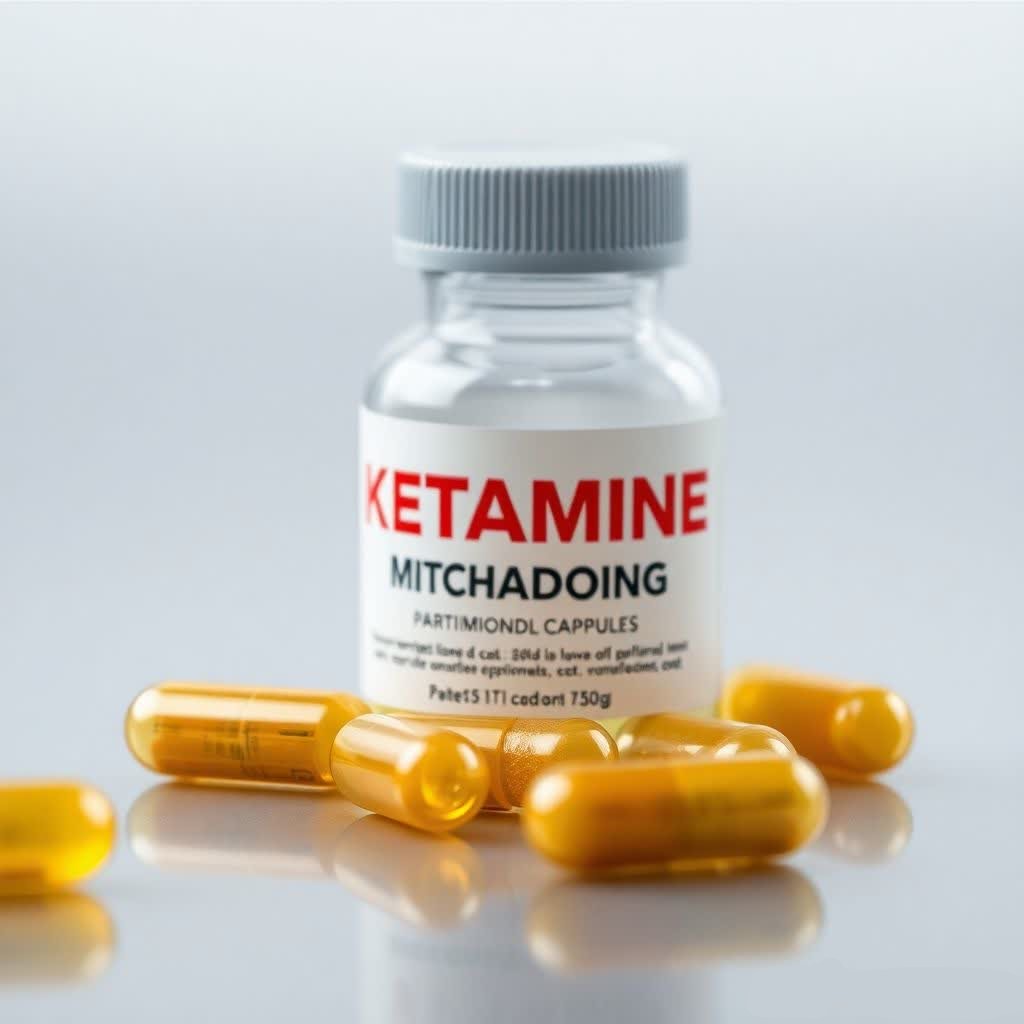Ketamine Microdosing for Pain: A Breakthrough in Therapy
Introduction: Understanding Ketamine and Its Role in Pain Management
ketamine microdosing for pain Ketamine, a dissociative anesthetic first approved by the FDA in the 1970s, has emerged as a multifaceted medication in both anesthesia and pain management. Initially utilized for surgical purposes, its unique pharmacological properties have broadened its applications. Ketamine works primarily by blocking N-methyl-D-aspartate (NMDA) receptors in the brain, which play a key role in pain perception and modulation.
Unlike conventional opioids, ketamine offers the benefit of avoiding respiratory depression and addiction risks. Its off-label use has shown potential for managing chronic pain conditions, including neuropathic pain and complex regional pain syndrome. This has positioned ketamine as a promising alternative in modern pain therapy.
What is Ketamine Microdosing? A Detailed Explanation
Ketamine microdosing involves the administration of sub-perceptual amounts of ketamine, a medication primarily used for anesthesia and, more recently, for mental health and chronic pain management. Unlike therapeutic doses designed to induce noticeable effects, microdoses are carefully calibrated to provide therapeutic benefits without causing significant alterations in consciousness.
This approach leverages ketamine’s ability to modulate the glutamate system within the brain, which plays a pivotal role in pain perception and emotional regulation. Microdosing aims to sustain neuroplasticity and reduce inflammation, potentially alleviating pain symptoms. Doses are typically administered in a clinical setting for safety or under medical supervision when prescribed at home.
The Science Behind Ketamine Microdosing for Pain Relief
Ketamine, a dissociative anesthetic, acts primarily on the N-methyl-D-aspartate (NMDA) receptors in the brain. By blocking these receptors, it inhibits the transmission of pain signals and mitigates central sensitization often associated with chronic pain conditions. Microdoses of ketamine are carefully designed to deliver therapeutic benefits without inducing dissociation or other psychological side effects.
Research suggests that ketamine may enhance neuroplasticity, fostering the brain’s ability to reorganize itself. This mechanism plays a role in reducing neuropathic pain. Additionally, ketamine influences secondary pathways, including opioid receptor modulation and anti-inflammatory effects, which contribute to its analgesic properties.
History of Ketamine Usage in Medicine: From Anesthesia to Microdosing
Ketamine, first synthesized in the 1960s, was initially developed as an alternative anesthetic to phencyclidine (PCP). It entered medical practice in 1970 after FDA approval, widely adopted for its rapid onset and safety profile. As a dissociative anesthetic, it quickly gained importance in surgical procedures, particularly in trauma and battlefield settings.
In psychiatry, ketamine showed antidepressant effects when researchers noted its impact on mood during anesthesia. By the 2000s, studies explored its low-dose use for refractory depression and chronic pain. Microdosing ketamine emerged as a therapeutic approach, expanding its applications beyond anesthesia.
How Ketamine Interacts with the Brain and Nervous System
Ketamine primarily acts on the central nervous system by modulating the activity of the N-methyl-D-aspartate (NMDA) receptor, a critical player in the brain’s glutamate pathways. It functions as an NMDA receptor antagonist, inhibiting glutamate’s excitatory effects, which reduces neuronal hyperactivity. This mechanism is key in its analgesic and dissociative properties.
Beyond NMDA inhibition, ketamine influences other systems, including the opioid, serotonin, and dopamine pathways, contributing to its complex effects on mood and perception. Its ability to trigger rapid synaptogenesis in the prefrontal cortex fosters neural plasticity, which is important in pain modulation and mood regulation.
Benefits of Ketamine Microdosing Compared to Traditional Pain Treatments
Ketamine microdosing offers several distinct advantages over traditional pain management options. These benefits include:
- Rapid Onset of Relief: Unlike many prescription opioids and NSAIDs, ketamine microdosing begins to alleviate pain within minutes, making it ideal for acute and chronic pain conditions.
- Reduced Risk of Dependency: Ketamine is known for its low potential for physical dependence compared to opioids, which carry a high risk of addiction.
- Neuroplasticity Enhancement: Microdosing ketamine promotes neural rewiring, aiding in long-term pain management by addressing underlying neuropathic issues.
- Fewer Systemic Side Effects: Common painkillers may harm the liver, stomach, or kidneys over time. Ketamine’s side effect profile is milder when used in controlled microdoses.
- Non-Sedative Nature: Traditional treatments may impair daily functioning due to sedative effects. Ketamine sustains mental clarity when appropriately dosed.
Potential Risks and Side Effects of Microdosing Ketamine
Microdosing ketamine may present several risks and side effects, despite its therapeutic potential. These include psychological impacts, such as mood instability or increased anxiety. Physiological effects may arise as well, including dizziness, nausea, or elevated blood pressure. Long-term use raises concerns about dependency and possible cognitive impairment. Some individuals could experience allergic reactions or adverse responses due to health conditions or drug interactions. Monitoring by medical professionals is essential to mitigate risks and ensure proper dosing. Unexpected side effects might also occur as research on microdosing progresses, emphasizing the need for caution in clinical application.
Current Research and Clinical Trials on Ketamine Microdosing
Recent scientific exploration into ketamine microdosing has revealed promising potential in managing chronic pain. Researchers are investigating its ability to offer sustained pain relief without significant side effects commonly associated with higher doses.
Ongoing clinical trials aim to determine optimal dosing regimens for various conditions, including fibromyalgia, neuropathic pain, and postoperative pain, while evaluating long-term safety. Studies have focused on how sub-perceptual doses affect neuroplasticity and modulate NMDA receptor activity.
Preliminary findings suggest microdosing may reduce reliance on opioids. Controlled trials are assessing its efficacy compared to conventional pain treatments, offering insights into therapeutic outcomes and patient quality of life.
Success Stories: Real-Life Experiences of Pain Relief Through Ketamine
Numerous individuals have reported profound improvements in their quality of life through ketamine microdosing for pain management. Patients with conditions like fibromyalgia and neuropathic pain have described a reduction in pain intensity and frequency. Chronic pain sufferers shared accounts of regaining mobility and participating in daily activities after years of debilitating discomfort.
Healthcare providers noted cases where ketamine alleviated pain that was resistant to conventional treatments. Positive changes in mood and mental clarity were also observed, leading to enhanced overall well-being. These testimonies highlight ketamine’s potential to transform lives, sparking conversations within medical communities.
Legal and Ethical Considerations Surrounding Ketamine Microdosing
The legal status of ketamine varies widely depending on the jurisdiction. In many countries, ketamine is classified as a controlled substance, demanding strict regulation governing its medical use. Ethical considerations arise from its potential for misuse, addiction, and long-term impact on mental health. Medical professionals must navigate informed consent protocols when prescribing ketamine, ensuring patients understand possible side effects and risks. Institutions may face challenges in balancing accessibility with the prevention of abuse. Additionally, ongoing clinical research is essential to define ethical boundaries, addressing concerns about off-label usage and fair distribution in healthcare settings.
Steps to Implement Ketamine Microdosing in Pain Therapy
- Conduct Initial Assessment Healthcare providers should evaluate the patient’s medical history, pre-existing conditions, and current pain levels to determine suitability for ketamine microdosing therapy.
- Determine Dosage Parameters Accurate microdosing requires establishing individualized dosages based on patient tolerance, weight, and pain severity while maintaining safety guidelines.
- Create Customized Treatment Plans Treatment plans should integrate the microdosing schedule with ongoing pain management strategies and monitoring protocols.
- Monitor and Adjust Regular patient follow-up is essential to observe efficacy, address side effects, and optimize dosage over time.
- Educate Patients Clear guidance should be provided to patients regarding usage, expectations, and potential risks to ensure compliance and informed consent.
Challenges and Opportunities in Ketamine Microdosing: Future Outlook
Ketamine microdosing for pain management presents both hurdles and potential advancements that require close attention from medical experts and regulatory bodies. Challenges include limited data on long-term efficacy and safety, which necessitate extended clinical trials. The risk of dependence and psychological side effects, such as dissociation, pose another critical concern. Regulatory ambiguity further complicates widespread integration into clinical practices.
Opportunities lie in enhanced understanding through advancing neuropsychiatric research and the development of novel protocols for personalized dosing. Increasing collaboration among scientists, industry professionals, and policymakers has the potential to streamline approval processes and create standardized guidelines for implementation in therapeutic settings.
Conclusion: Is Ketamine Microdosing the Next Big Thing in Pain Management?
Ketamine microdosing is garnering attention as a potential innovation in pain management, particularly for individuals resistant to standard treatment options. Research points to its ability to modulate pain perception by interacting with NMDA receptors and promoting neuroplasticity. While existing studies highlight its benefits, including rapid relief and minimal side effects at sub-perceptual doses, long-term implications remain unclear due to limited data. Physicians and researchers are cautiously optimistic but emphasize the need for rigorous clinical trials. Its appeal lies in balancing efficacy with safety, yet careful regulation and tailored protocols will determine its true role in modern pain therapeutics.





Reviews
There are no reviews yet.